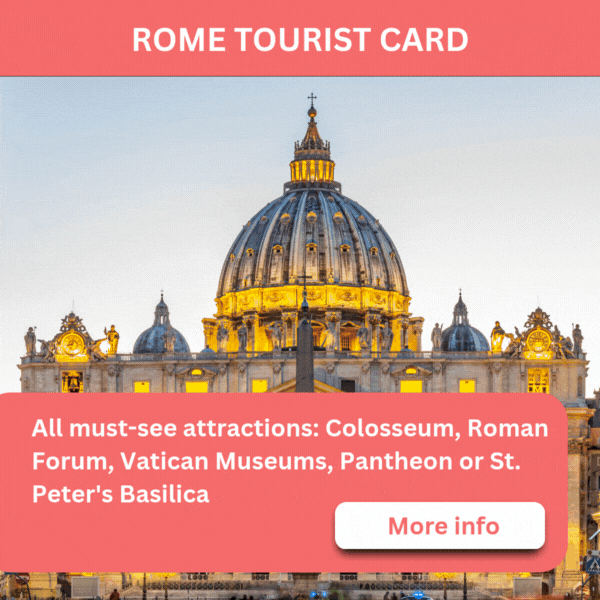
San Giovanni in Laterano Rome
Visit the Archbasilica of Saint John Lateran in Rome

Would you like to visit the ‘Arcibasilica di San Giovanni in Laterano’, or the Archbasilica of St John Lateran in Rome? Info and tickets for visiting the church, Scala Santa and Lateran Palace in Rome.
Info & Tickets Saint John Lateran Basilica in Rome |
|
| Address | Piazza del Laterano, 4 Rome |
| Metro | Metro stop San Giovanni (Line A) |
| Tickets | Free admission to the basilica. To visit the museum, Sancta Sanctorum, monastery and baptistery you need to buy a combi ticket (incl. audio guide). You can book tickets online. Next to the basilica is also the Lateran Palace. This palace served as a residence for popes in the early Middle Ages before they moved their seat to the Vatican. You can only visit this bishop's house with this tour. 2. Tickets Lateran Palace |
| Opening hours |
|
| Dresscode | Many of the churches in Rome have dress codes. Please, don't wear flip-flops and be sure to cover your knees and shoulders. |
Archbasilica of Saint John Lateran in Rome
The ‘Arcibasilica di San Giovanni in Laterano’, or the Archbasilica of Saint John Lateran in Rome was founded in 313 under emperor Constantine the Great. Emperor Constantine was the emperor who, with the ‘Edict of Milan’, allowed freedom of religion in the Roman empire in 313, which also included Christianity. The church originally served as a papal residence. It lost this function after the papal return from Avignon (1309-1377), in part due to a number of fires. But the church remained one of the four Papal churches of Rome along with St. Peter’s Basilica (the other two Papal churches are Santa Maria Maggiore and San Paolo Fuori le Mura). It is worth noting that this church is the cathedral of the diocese of Rome, technically giving it the status of the most important church in Rome.
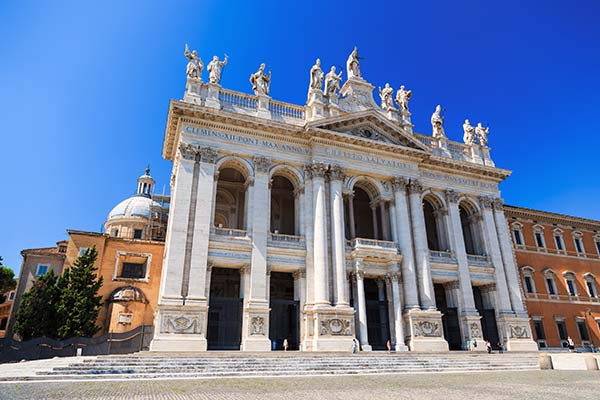 Basilica of Saint John Lateran in Rom
Basilica of Saint John Lateran in Rom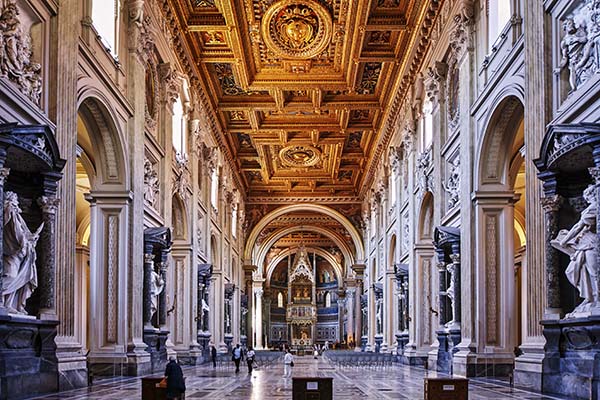 Arcibasilica di San Giovanni in Laterano
Arcibasilica di San Giovanni in Laterano History Basilica di San Giovanni in Laterano
The Basilica di San Giovanni in Laterano is the oldest church building in Rome, but little was left of the original after a severe earthquake in 896. Not until 1650 was the church thoroughly rebuilt by architect Borromini for pope Innocent X, giving it its current baroque appearance. It was not until the 18th century that the church was given its beautiful façade with 15 statues by Alessandro Galilei. The only medieval remnant of the church is the octagonal baptistery from the 5th century. The name ‘Laterano’ is derived from the family name ‘Lateranus’. That is because the church was built in the gardens of the former palace of the royal family of Plautius Lateranus. He was sentenced to death under Emperor Nero for allowing Christians to hide in his palace, and his palace was confiscated by emperor Nero. Three centuries later, emperor Constantine gave the palace back to pope Miltiades, after which the palace was used as a papal residence.
Places to visit in the Archbasilica
Some of the places to visit in the Archbasilica of St John Lateran:
- In the centre of the St. John Lateran church is the gothically decorated papal altar with relics from Paul and Peter behind golden bars.
- The church also has twelve statues representing the apostles, made by students of Bernini.
- The frescos on the ceiling were a design by Michelangelo, but they were carried out by his apprentice, Giacomo della Porta.
- The green central doors of the church originally came from the senate building on the Forum Romanum.
- The church contains six papal tombs: Pope Sergius IV (1009-1012), Pope Alexander III (1159-1181), Pope Innocent III (1198-1216), Pope Martinus V (1417-1431), Pope Clement XII (1730-1740) and Pope Leo XII (1878 -1903).
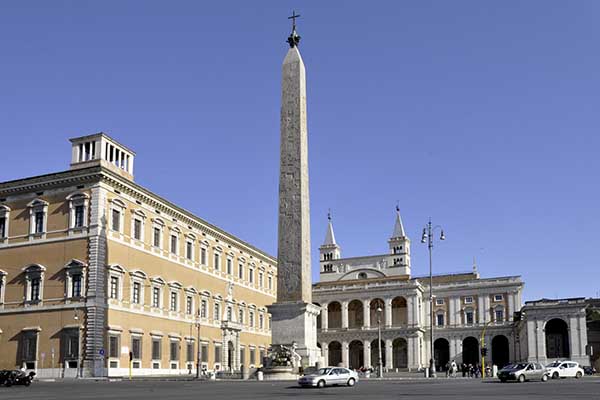 Piazza di San Giovanni in Laterano
Piazza di San Giovanni in Laterano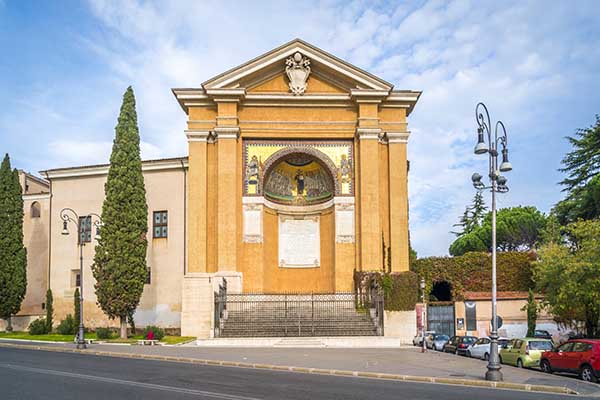 Scala Sancta in front of St. John Lateran basilica
Scala Sancta in front of St. John Lateran basilicaPiazza San Giovanni in Laterano
The obelisk on Piazza San Giovanni square in Laterano is one of the largest and oldest obelisks of Rome. Across from the basilica are the Scala Sancta (‘Holy Steps’). These steps are said to have once been part of the headquarters of Pontius Pilate in Jerusalem. It is believed Jesus himself walked those steps, and they were later brought to Rome as a relic. These steps lead to the ‘Holy of Holies’, and the faithful climb the steps on their knees, earning them an indulgence since pope Pius VII.
Lateran Palace
Next to the basilica is the Lateran Palace. The Lateran Palace served as a residence for popes in the early Middle Ages before they moved their seat to the Vatican. The palace was originally built in the 1st century AD, but underwent several renovations and reconstructions over time. It has a rich history as the seat of papal power and has often been the scene of important events in church history, such as councils and coronations. The Lateran Palace is also known for its architectural splendor and historical significance. The palace can only be visited with a guided tour.
Archbasilica of Saint John Lateran Tickets & Tours
Where is the Saint John Lateran in Rome?




